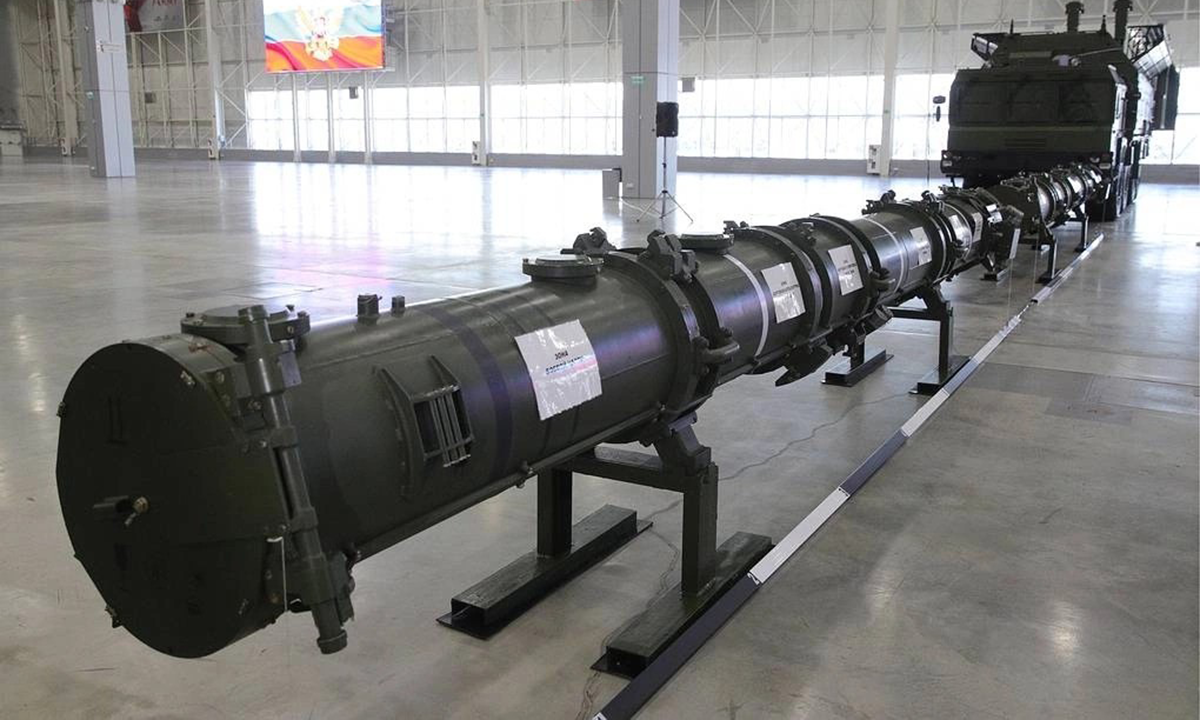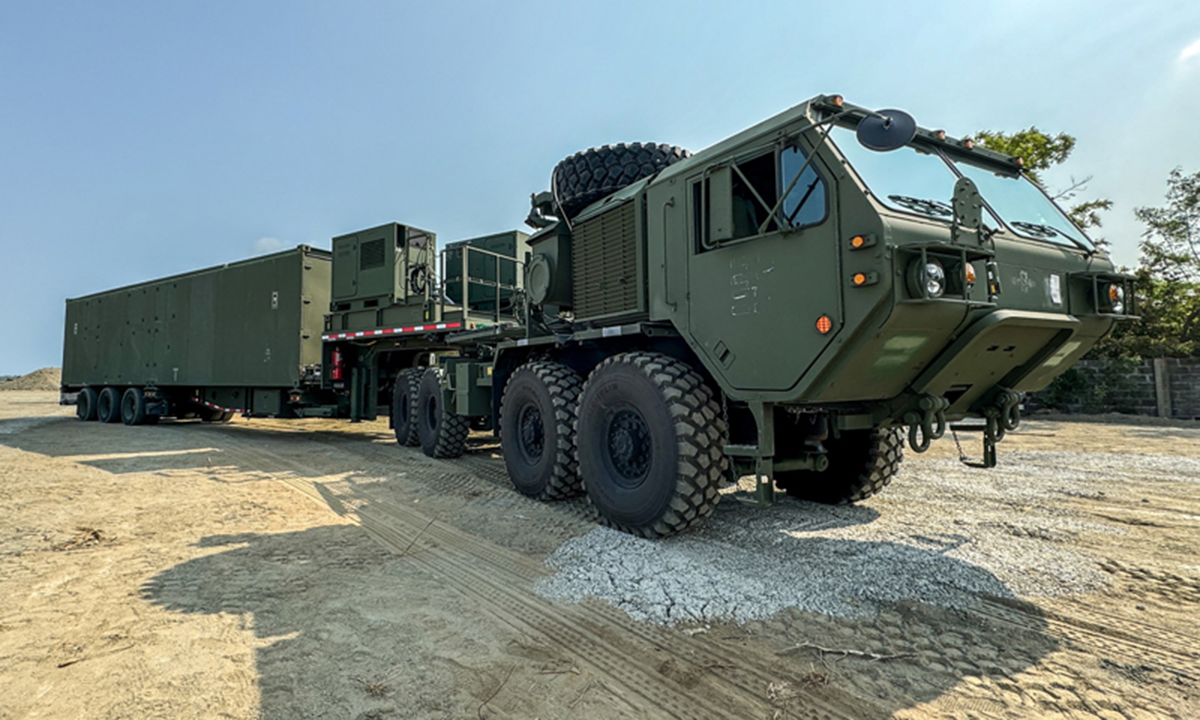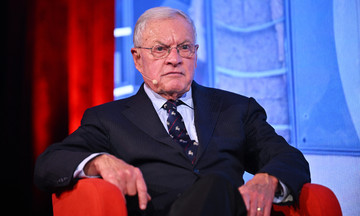On 4/8/2025, the Russian Ministry of Foreign Affairs announced it would end its commitment not to deploy intermediate and long-range missiles, a pledge it had maintained after the US withdrew from the Intermediate-Range Nuclear Forces (INF) Treaty in 2019.
"Due to our warnings being ignored, US-made intermediate and long-range missiles continue to be deployed in Europe and the Asia-Pacific. The current conditions no longer allow Russia to maintain the unilateral ban on deploying similar weapons," the ministry stated.
The US and the Soviet Union signed the INF Treaty in 1987, marking the first time major powers agreed to reduce their nuclear arsenals. The treaty prohibited both sides from developing and deploying ground-launched cruise and ballistic missiles with ranges of 500 to 5,500 km. After the Soviet Union dissolved, Russia inherited the INF Treaty.
 |
The 9M729 missile canister and launcher unveiled by Russia in 2019. Photo: TASS |
The 9M729 missile canister and launcher unveiled by Russia in 2019. Photo: TASS
The Trump administration withdrew from the INF Treaty in 2019, accusing Russia of developing the 9M729 missile with a range of nearly 5,000 km. Moscow denied the accusations, insisting the missile's range was 480 km, and criticized Washington for not complying with the treaty by placing Aegis Ashore systems capable of launching 2,500 km range Tomahawk cruise missiles in Europe.
Russia subsequently imposed a unilateral self-restraint order, declaring it would not produce or deploy missiles prohibited under the INF Treaty, as long as the US did not deploy such missiles globally.
However, Washington has repeatedly tested ground-launched intermediate-range missiles capable of carrying nuclear warheads, weapons banned under the INF Treaty. In 4/2024, US officials brought the Typhon system, capable of launching Tomahawk cruise missiles, to the Philippines for joint exercises.
Military experts warn that Russia's move not only marks the complete end of the INF Treaty, but also ushers in a new era of global insecurity.
This decision could escalate tensions in Europe, once the epicenter of nuclear confrontations during the Cold War.
On 10/7/2025, the US military announced plans to deploy long-range missiles, including Tomahawks and a hypersonic weapon under development, in Germany starting in 2026, a move seen as a direct threat to Russia.
"Lifting the commitment to the missiles banned under the INF Treaty is Russia's direct response to restore the strategic balance, but this risks pushing Europe into a new arms race," commented Angela Stent, a security expert at Georgetown University.
Intermediate-range missiles deployed in Europe could reach targets in Russia in 6 to 11 minutes, significantly reducing reaction time and increasing the risk of nuclear escalation. In the 1980s, US Pershing II and Tomahawk missile sites in West Germany caused similar concerns, prompting the Soviet Union to heighten its combat readiness.
The current situation could lead to a repeat of this scenario.
Deputy Chairman of the Russian Security Council Dmitry Medvedev emphasized this move is a "direct result of NATO's anti-Russian policy" and warned that Moscow could take further steps. This raises concerns that Russia might deploy Oreshnik intermediate-range missiles near NATO borders, such as in Belarus.
In the Asia-Pacific region, Russia's decision also has significant implications. The US has announced plans to deploy the Typhon missile system in the Philippines and collaborate with Australia to develop the PrSM missile with a range exceeding 1,000 km, both seen as direct threats by Russia.
 |
A Typhon missile launcher in the Philippines in 4/2024. Photo: US Army |
A Typhon missile launcher in the Philippines in 4/2024. Photo: US Army
According to military analyst Igor Korotchenko, Russia could respond by deploying intermediate-range missiles in the Far East or cooperating with allies like China to enhance its military presence in the region.
Bonnie Glaser, an expert at the Center for Strategic and International Studies (CSIS), warns that this risks creating an arms race in the Asia-Pacific, especially in East Asia.
Russia's decision could also affect other regions, particularly the Middle East. Instability in arms control treaties could prompt countries in the region to consider developing nuclear weapons.
The complete collapse of the INF Treaty is a major blow to the global arms control system, already weakened by unilateral actions by the US and Russia in recent years.
The INF Treaty was a cornerstone of strategic stability between the world's two leading nuclear powers. The abandonment of the INF Treaty by both the US and Russia increases the risk of losing other control mechanisms like the New START Treaty, which will expire in 2026 if not extended.
"The collapse of the INF Treaty not only increases the risk of an arms race, but also undermines confidence in international treaties. Non-nuclear weapon states will feel threatened and seek to develop these weapons for self-defense, further complicating nuclear non-proliferation efforts," said arms control expert Amy Woolf of the Congressional Research Service.
The Nuclear Non-Proliferation Treaty (NPT), another pillar of the global arms control system, is also facing challenges. At the 2022 NPT Review Conference, disagreements between the US and Russia regarding the conflict in Ukraine prevented the conference from adopting a joint statement.
 |
Russia's Sarmat intercontinental ballistic missile during a 2022 test. Photo: Russian Ministry of Defense |
Russia's Sarmat intercontinental ballistic missile during a 2022 test. Photo: Russian Ministry of Defense
The abandonment of the INF Treaty by both Russia and the US will increase pressure on the NPT, especially as countries like Iran consider withdrawing from the treaty.
"Both Russia and NATO are increasing their deployment of intermediate-range missiles, which could lead to a spiral of confrontation, increasing the risk of miscalculation and nuclear escalation," warned Hans Kristensen, a military analyst at the Federation of American Scientists.
The US and NATO have expressed concerns about Russia's move. However, former President Trump has indicated he might resume negotiations with Russia to maintain limits on nuclear weapons. This suggests the US recognizes the risk of escalation and is seeking to reduce tensions through dialogue.
Phong Lam (Vzglyad, TASS, Reuters)












